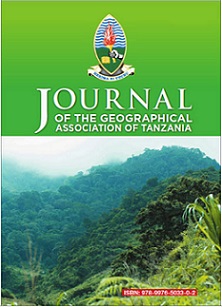Community Livelihood Vulnerability to Climate Change in Ileje District, South-Western Tanzania
Abstract
Community livelihood assets are important in enhancing household adaptive capacity and resilience to the impact of climate change. This paper examined the vulnerability of community livelihood assets to the impacts of climate change using Ileje District, in south-western Tanzania as a case study. Random sampling was used to select four villages, out of which two villages were sampled from midland and two from highland established agro ecological zones, constituting a total sample size of 308 households. Descriptive statistics was used in data analysis generated from household interviews. A balanced weighted average approach was performed to calculate households ' livelihood vulnerability index (LVI). The results showed that climate change impacted the livelihood assets of households; and more so on social, physical and financial capital; with LVI of 0.7, 0.4, and 0.4, respectively. Households ' incomes, land and water productivity, biodiversity, soil fertility and water flow from water sources were reduced; household health and employment opportunities were impacted; whereas households ' food shortage and poverty increased. The results also revealed the adaptive capacity index of 0.35 (overall), 0.34 (midland zone) and 0.36 (highland zone), indicating the study area to be moderately vulnerable to climate change. This paper argues that assessing the magnitude of climate change impacts on households ' livelihood assets is strategic for sustainable adaptation to climate changes as it guides policy makers and planners on appropriate management measures. Similarly, increasing the access of livelihood assets to the more vulnerable households is vital for sustaining their livelihoods.
Keywords: climate change, , livelihood, livelihood assets, vulnerability, Ileje District



